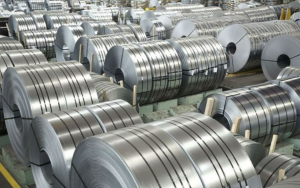304 Stainless Steel
Stainless steel 304 is a versatile type of steel that has a wide range of applications. It is made up of 18% chromium and 8% nickel, which gives it its characteristic stainless look and helps to resist corrosion.
In addition, stainless steel 304 contains smaller amounts of carbon and manganese than other types of steel, making it relatively easy to work with. This blog post will provide an overview of the properties and uses of stainless steel 304.
Alloy Designations
The alloy designations of stainless steel originate from the American Iron & Steel Institute (AISI) and the Society of Automotive Engineers (SAE) predicated on alloying elements, uses, and other factors.
Stainless steel names can sometimes be confusing because the same alloy can have different identifiers depending on which system is being referenced.
That said, the chemical composition of most alloy blends remains the same across classification systems.
Stainless steel 304 is the most versatile and widely used stainless steel, and here is a breakdown of its most common alloy designations.
304 Stainless Steel
Stainless steel 304 is an austenitic grade – a molecular structure made from the iron-chromium-nickel alloy blend – that can be severely deep drawn.
304 stainless steel is essentially non-magnetic. It’s not as susceptible to corrosion because austenitic steels are generally low carbon.
304 is good for welding – with and without fillers – and it easily draws, forms, and spins into the desired shape.
Stainless steel 304 is also known as 1.4301 and corresponds to S30400, 304S15, 304S16, 304S31, and EN58E.
An older name for 304 is 18/8 – derived from the nominal composition of 304 being 18% chromium and 8% nickel.
Alloy Designations
The alloy designations of stainless steel originate from the American Iron & Steel Institute (AISI) and the Society of Automotive Engineers (SAE) predicated on alloying elements, uses, and other factors.
Stainless steel names can sometimes be confusing because the same alloy can have different identifiers depending on which system is being referenced.
That said, the chemical composition of most alloy blends remains the same across classification systems.
Stainless steel 304 is the most versatile and widely used stainless steel, and here is a breakdown of its most common alloy designations.
304L Stainless Steel
304L alloy is the low carbon version of 304. Because of it’s improved weldability, it is extensively used in heavy gauge components . In certain cases, some plates and pipes may be available as “dual certified” material that meets the criteria for both 304 and 304L.
Grade 304L does not require post-weld annealing because the low carbon percentages increase ductility. 304L is also known as 1.4307.
304H Stainless Steel
304H, a high carbon content variant, is commonly used in applications at high temperatures. The increased carbon content helps preserve its strength while hea
304L Stainless Steel
304L alloy is the low carbon version of 304. Because of it’s improved weldability, it is extensively used in heavy gauge components . In certain cases, some plates and pipes may be available as “dual certified” material that meets the criteria for both 304 and 304L.
Grade 304L does not require post-weld annealing because the low carbon percentages increase ductility. 304L is also known as 1.4307.
304H Stainless Steel
304H, a high carbon content variant, is commonly used in applications at high temperatures. The increased carbon content helps preserve its strength while



